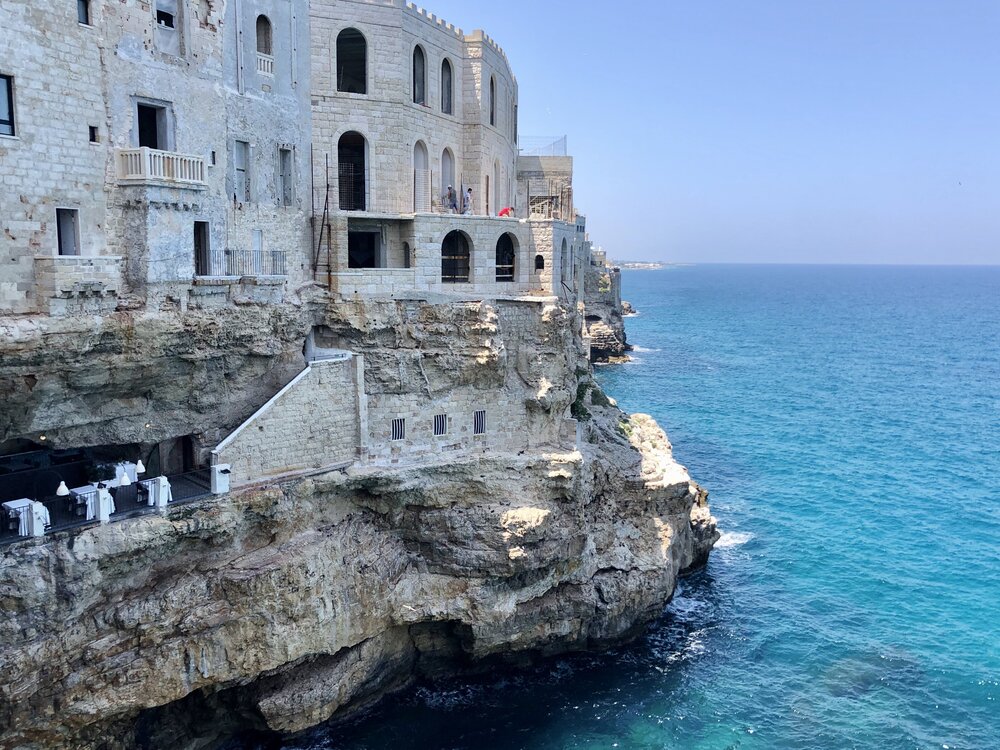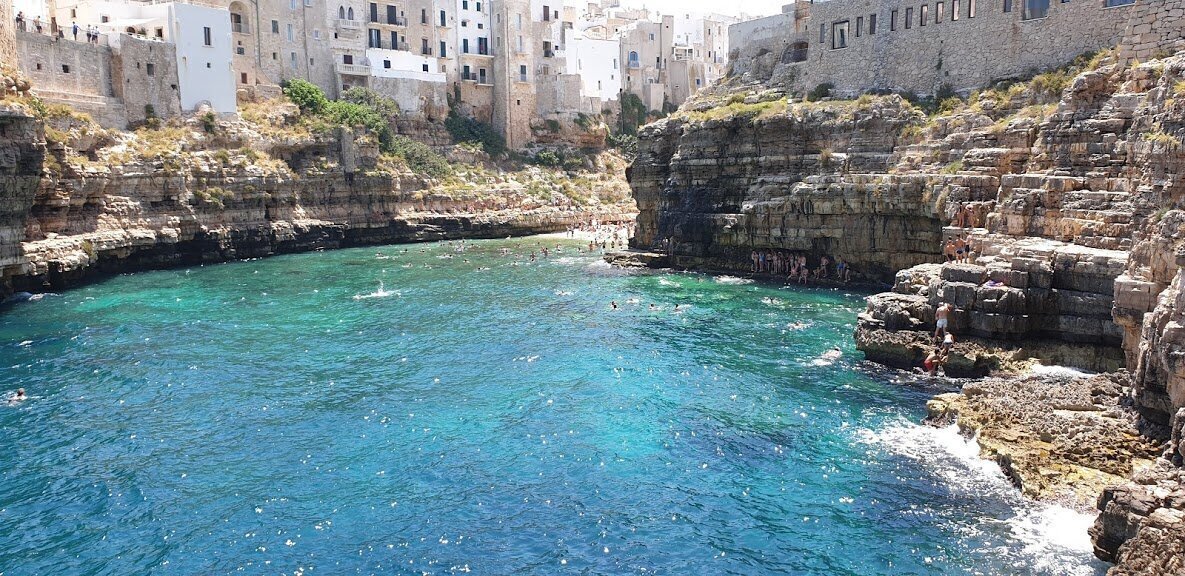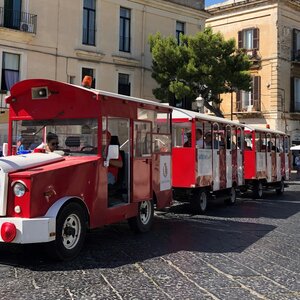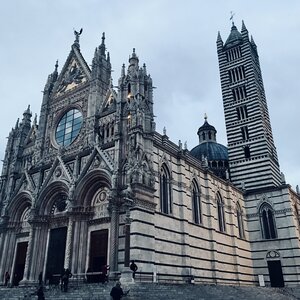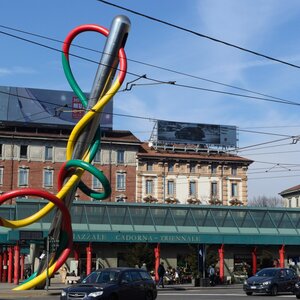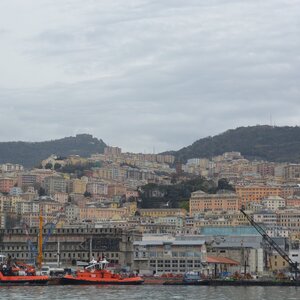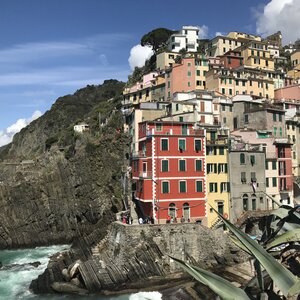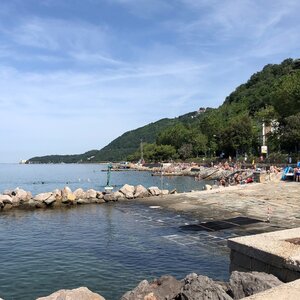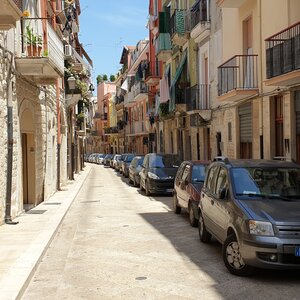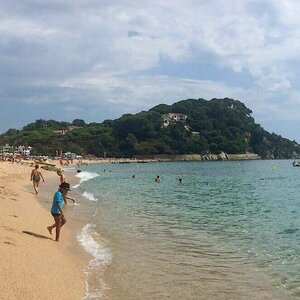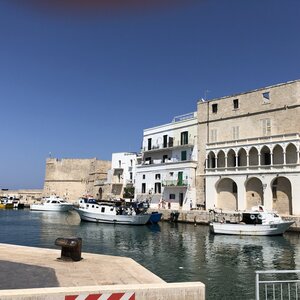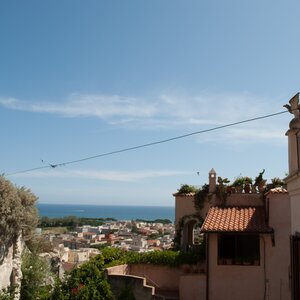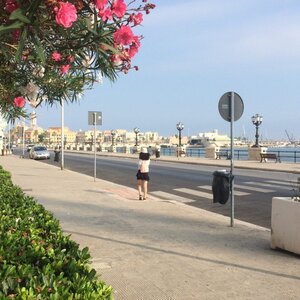Polignano-a-Mare is one of the most (if not the most) picturesque towns in Puglia. The town is situated on a high rocky shore with an incredible view of the turquoise sea. The Lama Monachile Cala Porto beach has become the hallmark of the town and of the whole of Puglia: it is included in the list of the most picturesque beaches in Italy.
The city itself has virtually no historical or architectural attractions. The key places in the city are the bridge that offers «that view», the old center and the promenade, where there is a monument to the singer Domenico Modugno, author of the popular song Nel blu dipinto di blu, or «Volare» (Volare).
Let me tell you what to see in Polignano-a-Mare, how to get to the city and where to stay.
Lama Monachile Cala Porto beach
The reason for the tourist pandemonium and high hotel prices in Polignano is this small free beach between high cliffs. It is considered the most picturesque, the most famous and the most photographed in Europe and Italy according to several rankings. The fact that the beach has been awarded the Blue Flag since 2008 is an interesting detail, but not at all the most important in relation to Cala Porto.
The tiny cove is crowded with people in high season. Right on the rocks around the beach — and in the rocks too — there are several luxury restaurants and hotels. The view is magnificent and unbelievable: the piercing turquoise sea surrounded by white cliffs, a bit of sparse southern vegetation and the bright old houses of the historic center above.
The beach gets its name from the Lama Monaquile bridge, which connects two cliffs, and from one of the cliffs, Cala Porto. From the bridge and from the cliff, the beach offers the most picturesque views. People come here from Bari and neighboring towns to swim on the most picturesque beach of the continent, so it is always very crowded.
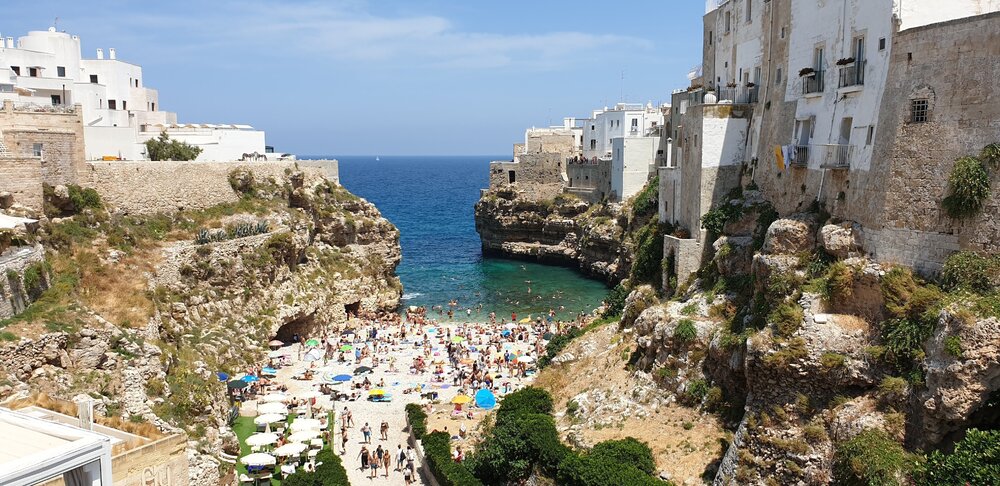
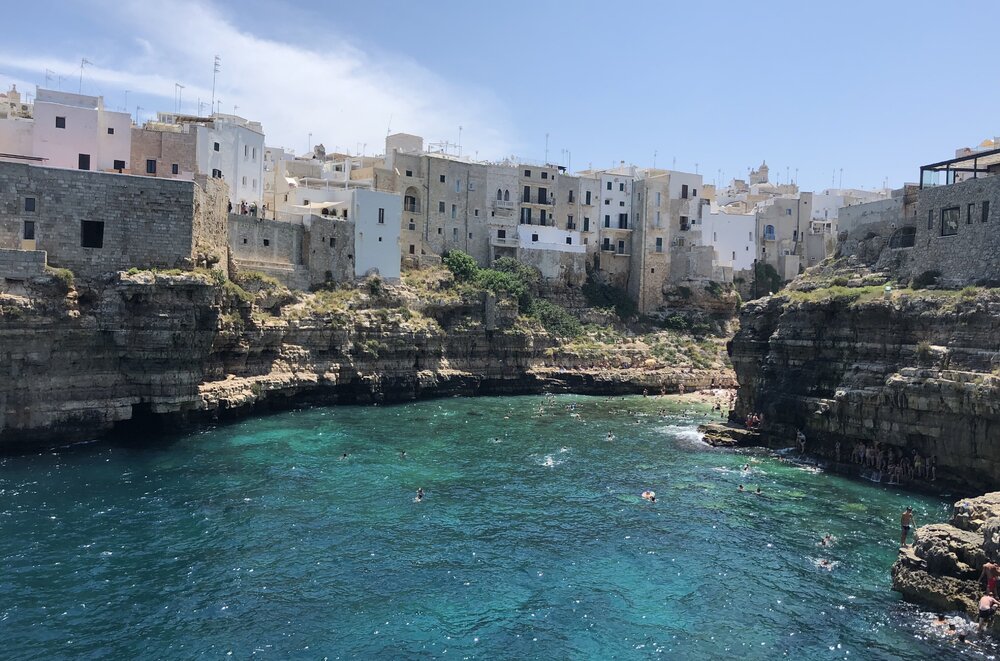

Ponte Lama Monachile (Bridge of Lama Monachile)
The Lama Monachile Bridge is not only remarkable because it is the main vantage point with the most extensive view of Cala Porto beach. This bridge is part of the ancient Via Traiana road, built by the Roman Empire to connect the city of Benevento near Naples with the port city of Brindisi. In the XV century, during the Venetian domination, it was a commercial port. It’s also the site of the Red Bull Cliff Diving competition, the only one in Italy.
The bridge was originally built in the Bourbon era, survived quite well through several centuries of history, and in 1997 was restored, or rather rebuilt almost completely.
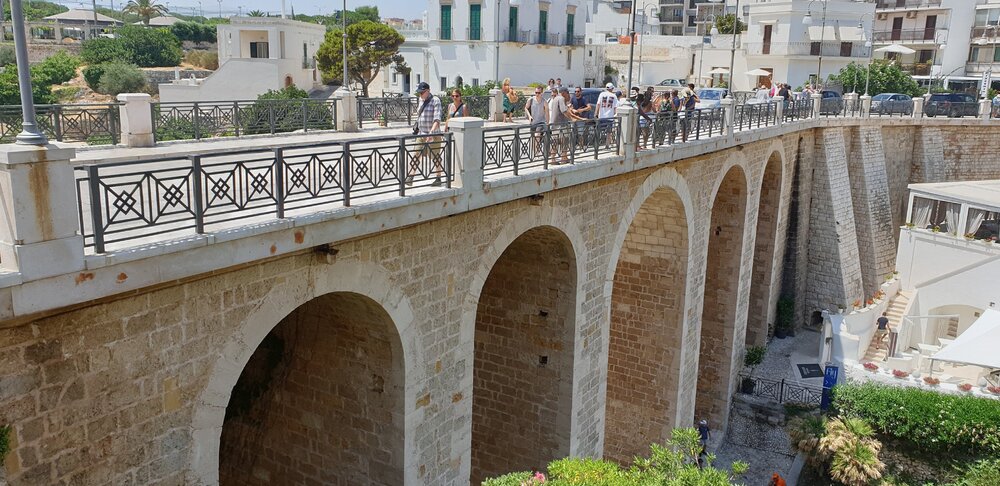
Waterfront (Lungomare)
The Lungomare promenade runs north from the bridge and is named after Domenico Modugno, perhaps the most famous native of Polignano. He became world famous after his song «Volare» won 1st place at the Sanremo contest in 1958. He is depicted with his arms spread like wings in a statue in a square near Lama Monachile.
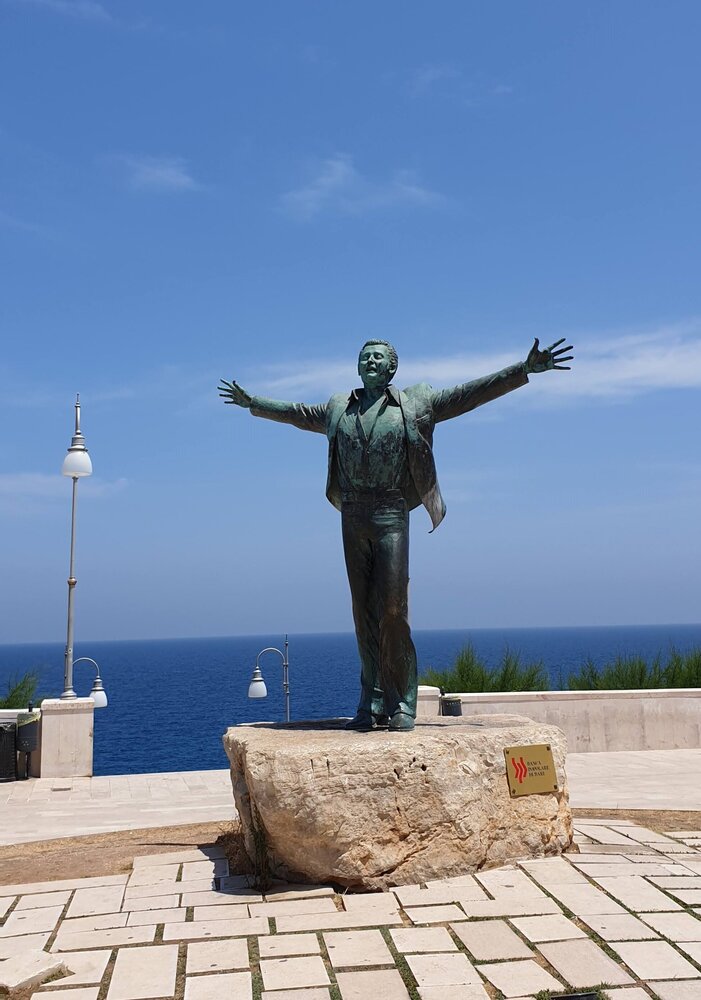
From the square there is access to a steep rocky shore overlooking Cala Porto beach, from which the boys jump into the water. The town still has a small historical center with traces of Arab, Byzantine, Spanish and Norman architecture. I’ll tell you more about it.
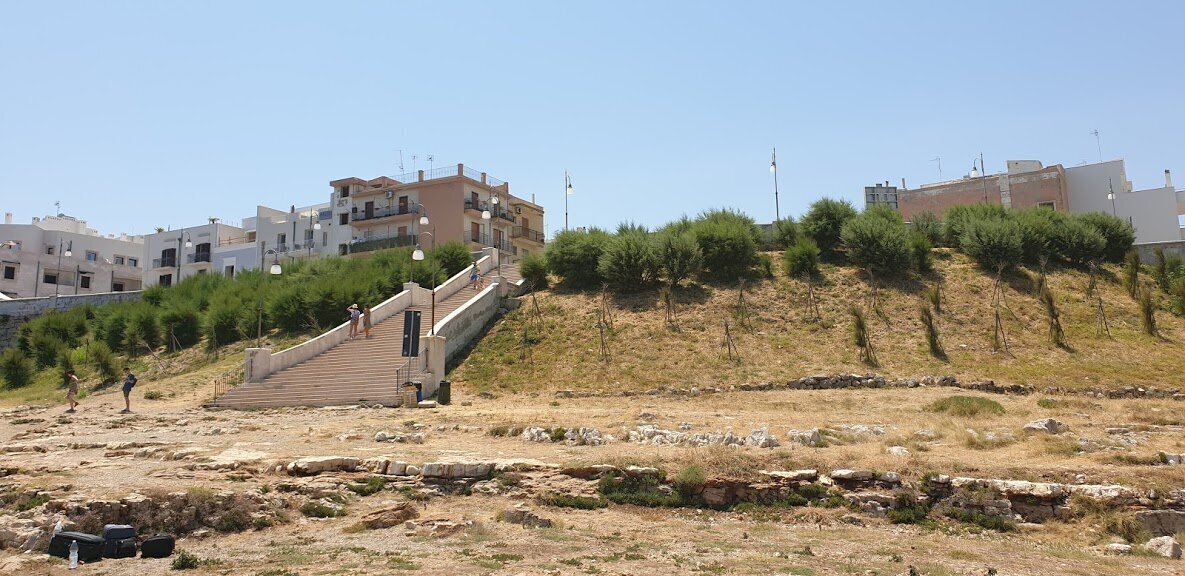
Historic center of Polignano-a-Mare
The beach and the bridge are just a few steps from the historic center of Polignano-a-Mare. The main entrance to the town is the Arch of Marchesale, or Porta Grande, built in 1530, with preserved bas-reliefs and frescoes. A painting depicting the crucifixion of Christ dates back to the 16th century. A small chapel, built at the same time, stands above the arch.
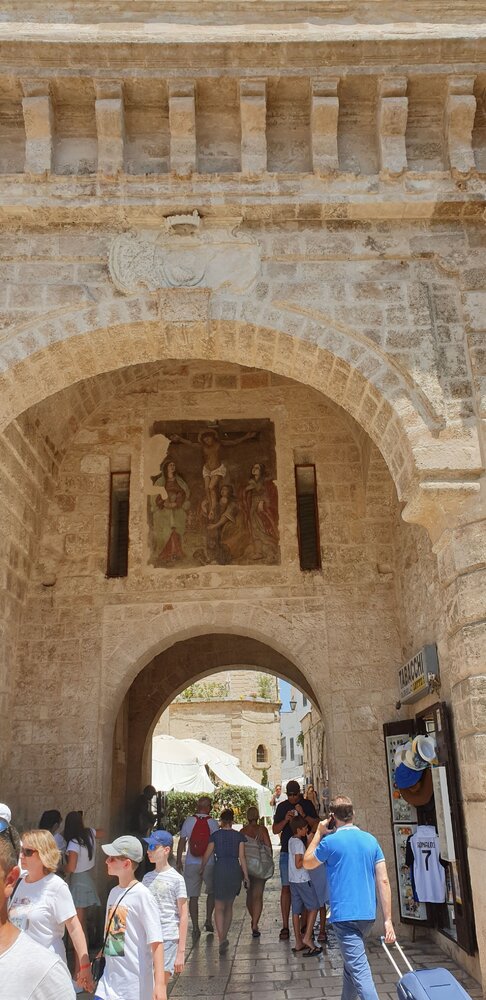
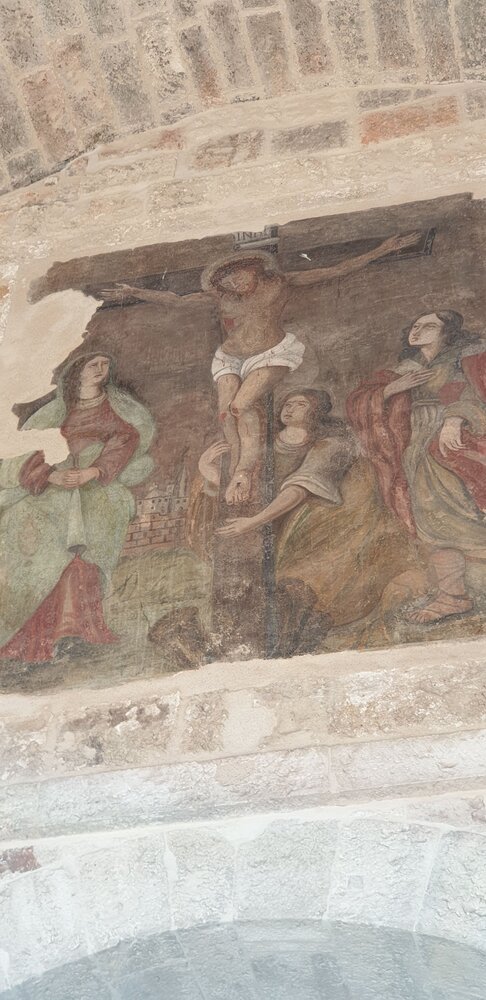
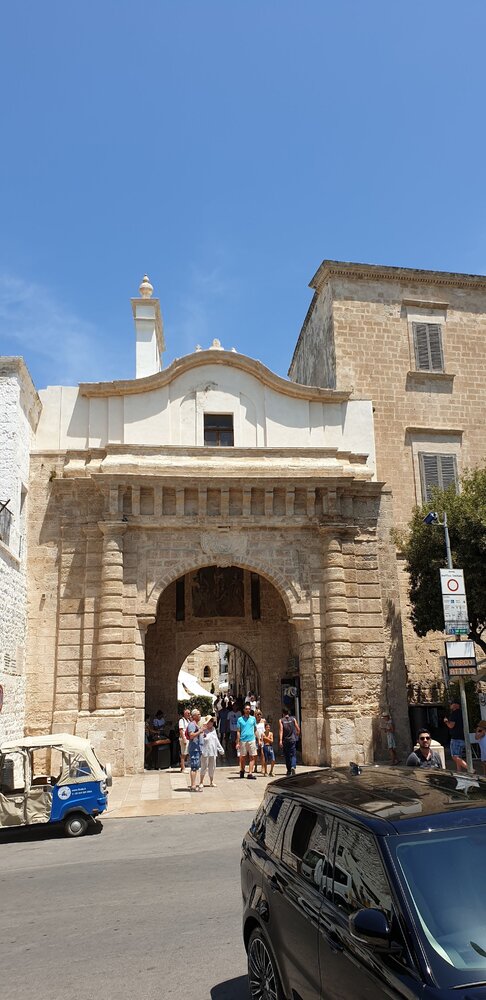
The historic center preserves the Palazzo del Doge, where the Venetian governor once lived during Venice’s short (only 20 years) rule, and several ancient churches.
- Church of the Assumption of the Blessed Virgin Mary (Santa Maria Assunta) in the heart of the historic center, in Piazza Vittorio Emanuele. Until 1818 the church was a cathedral church, but later the small diocese of Polignano was annexed to the diocese of Monopoli. You can’t get inside now, but it’s a pity: inside there are several works from the XVI–XVII century by the sculptor Stefano da Putignano, a polyptych of the Madonna with Child and Saints from the XV century and many artifacts and precious sacred vestments donated by the former monastery of San Benedetto, which doesn’t exist today. The chapel of San Vito houses the saint’s relics: a fragment of a shoulder joint and a kneecap.
- The Church of St. Anthony (San Antonio) was built at the end of the 16th century. It was once a monastery and now houses an ambulance service and a radio station.
- The Church of Cosma e Damian was built in the late 19th century in neoclassical style, in honor of the Holy Medics. This church also inherited some treasures from the ancient and now defunct monastery of San Benedetto, such as a large Baroque altar.
In the city center, you can’t miss the clock house on Piazza dell’Orologio. The medieval building once housed a university. Originally a solar clock, it is now mechanical and is still wound by hand by the owner of the house.

Grottoes and caves of Polignano
The whole coast around Polignano is full of sea caves, grottoes, from Grotta delle Rondinelle to Grotte L’Eremita (Le Grottelle). Some of them can be reached on foot, but most of the most beautiful ones can only be seen from the sea side. It’s worth taking a guided tour to visit the grottoes. An hour and a half boat ride with a visit to several caves costs from 30 € per person or 40 € with an aperitif.
On foot from the center you can see the monks' grotto (Grotta delle Monache). It was once used by the nuns who served in the hospital of St. Anthony’s Church. In 1878, steps were built from the cliff down to the grotto — now in poor condition and unsafe, but they can be climbed down.

How to get to Polignano-a-Mare
Polignano is only 33 km from Bari, the capital of Puglia. There are direct trains from Bari to Polignano-a-Mare. From Naples, Salerno, Matera and some other cities you can get there by bus. From other major cities in southern Italy you will have to travel via Bari or Monopoli.
Train Bari — Polignano-a-Mare
The most convenient way to get to Polignano is by train from Bari. The train takes about half an hour and costs only 2,5 €. There are 2—3 departures every hour.
The city is quite small, from the station to the historic center — 15 minutes on foot. It is very easy to navigate, and at the station tourists are greeted by a map of the city with sights.

Bus
You can take buses to Polignano from Naples, Salerno, Caserta, Potenza and several other cities. The journey from Naples takes 6 hours and costs 18 €, from Salerno 5 hours and 15 €, from Matera 1.5—2 hours.
- Tickets and schedule: Miccolis

Where to stay in Polignano-a-Mare
A vacation in Polignano is not cheap. There are many expensive restaurants here, where 80% of the check price is for the atmosphere and the view of the bay. And inexpensive hotels here are few. Therefore, most tourists in Polignano-a-Mare come for a day from neighboring towns — to walk and swim, and in the evening go back.
The cheapest rooms for two with a bath in a B&B cost 60—70 €. If you want a vacation with beautiful views and for a reasonable price, check out these hotels.
- A decent apartment in the historic city center or in the modern center: 62 € for two people.
- Experience ancient Polignano in an atmospheric ancient lodging in a house with authentic semi-circular ceilings: from 66 € for two people.
- Bed & Breakfast in the modern part of the city: from 68 € for two people with breakfasts.
- Hotel 3* Tuo Hotel 1,5 km from Lama Monakile — from 83 € with breakfasts.
- Hotel 4* Covo dei Saraceni right on the cliff above Cala Porto — from 155 € for two people.
- Finally, the legendary cave restaurant and 5* Grotta Palazzese hotel with postcard views offers accommodation from 550 to 1800 € for two people without breakfast. For breakfast in one of the most popular locations in Italy you have to pay 100 € extra. The expensive restaurant is located right in the grotto under the hotel, hidden from prying eyes, and only from the observation deck near the hotel you can see the edge of its terrace.
